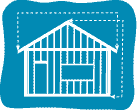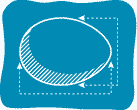
HOT TOPICS LIST
- Strategies
- Stocks
- Buy
- Investing
- Brokers
- Psychology
- Interviews
- Accumulate
- Sell
- Hold
- Spotlight
- Websites
- Candlestick Corner
- Gold & Metals
- Options Trading
LIST OF TOPICS
FINANCIAL PLANNING
How Effective Is Your Retirement Plan?
02/28/01 04:04:01 PM PSTby Jayanthi Gopalakrishnan
The closer you get to retirement, the more you may need to make changes in your portfolio.
 If you find yourself tempted to quickly review your retirement portfolio and rebalance it to put heavier weight on that one hot sector, think again. Typically, as you get closer to retirement, your risk tolerance level goes down. At the same time, your level of fear increases because you may feel that you will never be able to accumulate enough wealth to enjoy a comfortable retirement. Sure, you may have Social Security benefits, pension and group insurance plans, as well as the savings component of life insurance policies, but that may not be enough. The portion of your investments that you can control, either by yourself or with the help of a qualified financial professional, should provide you with a substantial source of income and confidence to enjoy your retirement. But having control can also create fear, which can be the driving force behind bad investment decisions. This fear changes with the market. During strong rallies, the fear is that you'll miss out; during weak markets, the fear is that you'll lose your nest egg. Unfortunately, there is too much focus on investment returns and not enough on realistic scenarios. If you have been through bear markets, you know that stock portfolios get hit the hardest during those periods. Not only that, and not coincidentally, during bear markets, you no longer hear those stories about the lavish and comfortable retirement lifestyles. Nobody likes to talk about losses, but it is during these down markets that the best investors stand out. Those ahead of the pack are those whose portfolios weren't exposed to the volatility in the markets or immediately reweighted everytime there was a sector that was wildly outperforming the others. If you plan out your retirement portfolio and stick to that strategy, you are far more likely to reach your goals and actually live the retirement life you envision. PREPARE YOURSELF With the easy access of retirement planning tools available on the Internet, it's no wonder there is so much focus on investment returns. Keep in mind, though, that investment returns are only part of the puzzle. There are some critical factors that should not be overlooked. According to Bud Hebeler of the Analyze Now! website, which focuses on educating investors about the realities of retirement, the two most important issues for anyone getting close to retirement age are to:
Finally, once you figure out how much it will cost you to live the life you want and create your financial plan to suit, it would be to your advantage to live on that budget for a few years before retirement to see whether you can do so successfully. Do not include your home equity as a retirement asset unless you plan on selling it and renting.
One of the most overlooked variables is an emergency reserve -- a necessary and important component of any retirement plan. With inflation growth, it is likely that medical costs, insurance, home and auto repairs, stock market declines, unplanned travel expenses, assisted care, and long-term care insurance will be costly. Further, you may have additional demands from elderly parents or children. Don't get caught in a situation where these needs will completely wipe out your hard-earned nest egg. Keep an emergency reserve large enough to accommodate these expenses. Hebener suggests that you keep at least one to two years' worth of projected expenses in a money market account where it is easily accessible. It is also a good idea to plan ahead five years and make sure you have enough liquid assets that can provide funds. The last thing you want is to be caught in a situation that forces you to sell your home.
Once you have determined how much your emergency reserve amount should be, the remainder can be allocated among various investments. Before you create this part of your retirement plan, though, you need to understand your emotional and financial needs. Paul Merriman of Merriman Capital Management explains that this is a critical part of building your retirement portfolio. Determine your risk/reward tradeoff. How much are you willing to lose annually to get the return you want? Typically, anyone over 65 should have a low tolerance for risk. After setting aside your reserve, the remainder should be divided among other investment vehicles. You should plan on investing no more than 50% in equities. Divide that part of your capital among different no-load mutual funds that represent noncorrelated asset classes. This is the best way to minimize risks. Invest some of it in fixed-income instruments such as bonds or bond funds. If you are going to buy bonds as opposed to investing in bond funds, try to limit yourself to the higher-rated bonds. (For more on bond ratings, see "Gentlemen [And Ladies!] Prefer Bonds" elsewhere in this issue.) You can time your bonds by buying bonds with different maturity dates, giving you an income source at different periods. CONCLUSION To have the luxury of living the lifestyle you want after retirement, the most important factor is to prepare yourself for the unexpected. Make sure you have assets stashed away in money market funds so they are easily accessible. After putting aside this reserve fund, think of allocating your assets among various investment vehicles. Adopting this method will not only pave the way for the retirement you want, but it will also require less of your time when it comes to actually rebalancing your portfolio. Technical Editor Jayanthi Gopalakrishnan can be reached at Jayanthi@Traders.com. |
Staff Writer
| Title: | Staff Writer |
| Company: | Technical Analysis, Inc. |
| Address: | 4757 California Ave SW |
| Seattle, WA 98116 | |
| Phone # for sales: | 206 938 0570 |
| Fax: | 206 938 1307 |
| Website: | working-money.com |
| E-mail address: | Jayanthi@traders.com |
Traders' Resource Links | |
| Charting the Stock Market: The Wyckoff Method -- Books | |
| Working-Money.com -- Online Trading Services | |
| Traders.com Advantage -- Online Trading Services | |
| Technical Analysis of Stocks & Commodities -- Publications and Newsletters | |
| Working Money, at Working-Money.com -- Publications and Newsletters | |
| Traders.com Advantage -- Publications and Newsletters | |
| Professional Traders Starter Kit -- Software | |
PRINT THIS ARTICLE

|

Request Information From Our Sponsors
- VectorVest, Inc.
- Executive Premier Workshop
- One-Day Options Course
- OptionsPro
- Retirement Income Workshop
- Sure-Fire Trading Systems (VectorVest, Inc.)
- Trading as a Business Workshop
- VectorVest 7 EOD
- VectorVest 7 RealTime/IntraDay
- VectorVest AutoTester
- VectorVest Educational Services
- VectorVest OnLine
- VectorVest Options Analyzer
- VectorVest ProGraphics v6.0
- VectorVest ProTrader 7
- VectorVest RealTime Derby Tool
- VectorVest Simulator
- VectorVest Variator
- VectorVest Watchdog
- StockCharts.com, Inc.
- Candle Patterns
- Candlestick Charting Explained
- Intermarket Technical Analysis
- John Murphy on Chart Analysis
- John Murphy's Chart Pattern Recognition
- John Murphy's Market Message
- MurphyExplainsMarketAnalysis-Intermarket Analysis
- MurphyExplainsMarketAnalysis-Visual Analysis
- StockCharts.com
- Technical Analysis of the Financial Markets
- The Visual Investor

 EMERGENCY FUND
EMERGENCY FUND STOCKS & BONDS
STOCKS & BONDS